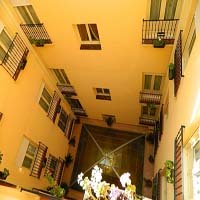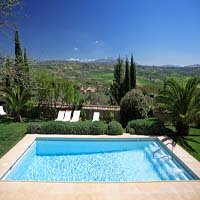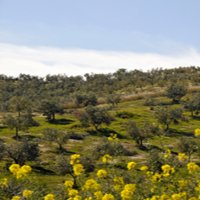Donana National Park
Wild, Wonderful Doñana National Park
It is easy to forget the natural beauty of Spain when traveling from one city to the next, however, Spain has set aside a tract of land along the estuary of the Guadalquivir River, Andalusia’s Doñana National Park is one of Europe’s most important nature preserves. Since its establishment in 1969 as one of the World Wildlife Foundation’s earliest projects (in partnership with the Spanish government), the park has evolved into one of the continent’s most renowned and treasured nature conservation areas.
Some Basic Facts about Doñana National Park
In contrast to many other large European river deltas and estuaries, most of the site of Doñana National Park remains relatively pristine, unmarked by major population centers, industrial development, or large-scale agriculture. Comprised of 209 square miles (542 square kilometers) of freshwater marshes and wetlands, scrublands, fixed and shifting sand dunes, ponds, lagoons and untouched beaches, the park shelters and protects numerous species of flora and fauna.
Wildlife Galore
It would be hard for birdwatchers to find a place that’s better-suited to pursuing their hobby: it’s said that half the bird species that inhabit Europe can be found at one time or another in Doñana National Park. Migratory birds from central and northern Europe spend their winters in the park, while others that live in Africa for most of the year summer there. The Spanish imperial eagle, Adalbert’s eagle, the white-headed duck, and the marbled teal are four of the rare or endangered bird species that roost in Doñana National Park. Every year, more than half a million waterfowl find winter shelter in the park’s welcoming wetlands.
Doñana’s residents include more than just an enormous variety of birds. For example, the park is home to an important colony of the rare Egyptian mongoose. The beautiful, exotic, endangered Iberian lynx also lives in Doñana and has become almost emblematic of the park and its wildlife. Game animals like geese, ducks, fallow deer, red deer, wild boar and rabbits are abundant. Naturally, a wide assortment of flowering and non-flowering plants, shrubs, vines and trees also live in the park. The biodiversity of Doñana National Park has become renowned throughout the world.
History and Current Status
Beginning as early as the 13th century, the site that is now Doñana National Park served as a royal hunting estate and private retreat for Spanish kings and other members of the aristocracy. Now, besides being one of the largest of Spain’s National Parks, Doñana has been designated a UNESCO biosphere reserve, a UNESCO World Heritage Site, a Ramsar Wetland Site, and a European Community Special Protection Area. Interesting side note: the area that is now Doñana National Park is also the site that triggered the formation of the World Wildlife Fund in 1961.
Despite the strict conservation laws that apply inside the park, civilization is making unwanted, unfortunate encroachments. The very presence of the towns and villages near the park’s borders has caused problems for some of the wild residents of Doñana. Stray village dogs have killed several of the park’s animals. Agricultural projects in close proximity to the park have also begun to threaten the fragile ecosystems due to increased water usage and pesticide/fertilizer runoff. In response, an extensive buffer zone has been established around Doñana’s official perimeter in order to better preserve its flora, fauna and ecosystems.
How to Get There, When to Go, and What to Expect
Two main visitor centers serve Doñana National Park: one is located near the village of El Rocio; the other is south of Almonte. A third visitor center (about 19 miles south of Villamanrique de la Condesa) is the gateway to the park’s northern portion.
Access is strictly controlled and most of the park is off-limits unless you’re escorted by one of the official park guides. Although visitors are free to wander the sign-posted trails, lagoons, and beaches close to the visitor centers, an official guide must lead all trips that enter the park’s interior. These ½-day guided trips are very popular, so you should probably book yours well in advance. Guided boat trips and 4x4 drives are available.
The type of wildlife you’ll see while you’re at Doñana National Park depends partly on whether your luck is good and partly on the time of year you’re there. The winter months (November through January) are cool and wet at the park. This is the perfect time for spotting a large number of waterfowl species, including wading birds like egrets and herons and various types of terns, geese and ducks. The migratory geese that come to Doñana from northern and central Europe usually leave in late February, but spoonbills from North Africa arrive at about the same time. Kites, terns and swallows are abundant during spring. If you’re truly lucky, you’ll spot one of the very rare Spanish imperial eagles as it soars high over your head. Summers are hot and dry but a great time to see various owls, vultures, kites, eagles, nightjars, cuckoos, shrikes, and magpies, among other species.
Special Note: Every year, up to a million pilgrims use part of the park during a procession (the Romeria de El Rocio) in honor of the Virgin of El Rocio. The procession itself takes place on the second day of Pentecost (a moveable religious holiday which occurs seven Sundays after Easter), but multitudes of pilgrims gather in the area beforehand. It can be almost impossible to find accommodations in the area during the days leading up to the procession. Even if you’re successful, your room will probably come at quite a cost.
Doñana National Park isn’t a destination where you spend your money on the thrills and chills of exciting amusement park rides. It’s also not a place where you can revel in the local culture by watching a bullfight or taking in a traditional Andalusian festival. So why go there? It’s simple, really. Doñana is the perfect place to witness the wild, wonderful beauty of nature and her creatures.
Return from Donana National Park to Southern Spain Travel
Copyright© southern-spain-travel.com All Rights Reserved. Content Protected By DMCA.
Authentic Spain Food
It's true! Get tapas, jamon, olive oil, manchego and chorizo shipped directly from Spain
Get Football Tickets
Click here to buy tickets to Spains Sports events
Book a Hotel






New! Comments
Have your say about what you just read! Leave me a comment in the box below.